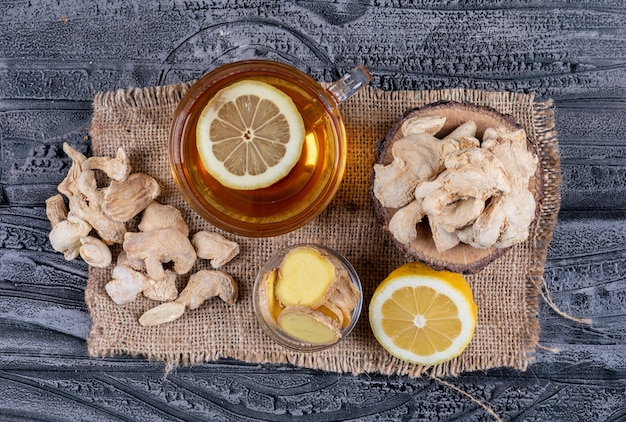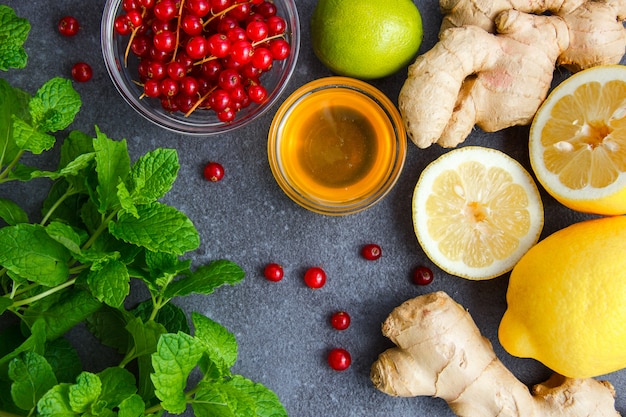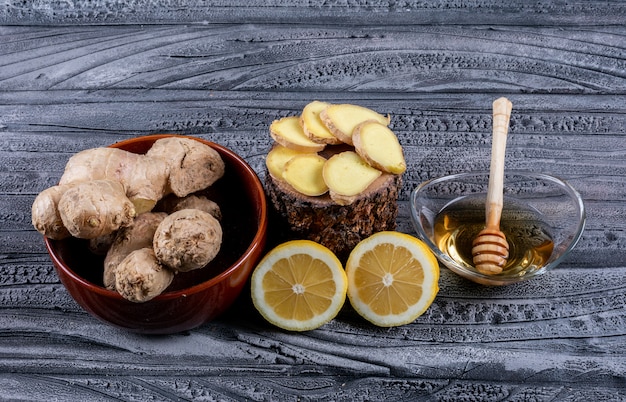Ah, ginger! Just the word evokes images of fragrant curries, zingy stir-fries, and soothing ginger tea. It’s a true kitchen staple, a trusty sidekick in my culinary adventures, and I reckon it’s probably in yours too. But let’s be honest, for a flavour so versatile, there’s a surprising amount of mystery surrounding this knobbly root. So, I thought it was high time I penned a definitive guide, you know, to demystify this culinary gem and help you get the most out of it.
We’ll be diving deep into the world of ginger, starting with how to choose the perfect piece, all the way to whipping up delicious dishes. Don’t worry, I’m not going to bore you with scientific jargon. This guide is all about fun, practical tips and tricks, just like how I cook. We’ll be exploring different ways to use ginger – from fresh to powdered, and even how to make your own ginger syrup. So, grab your apron, let’s get cooking!
(Part 1) Finding the Perfect Ginger

You know that feeling, right? You’re at the market, excited to pick up some ginger for your recipe. But then you see a pile of knobbly roots, all looking a bit similar, and suddenly you’re lost. Fear not! Choosing the right ginger is easier than you think. Here’s what to look for:
Size and Shape
A good ginger root will be firm and plump, not shriveled or limp. It’s a bit like picking a good avocado, really. You want one that’s hefty and feels solid in your hand. A smaller ginger root might be just what you need for a quick dish, but if you’re planning to use it for a big batch of something, grab a bigger one. And don’t be afraid of the bumps and knobbles – that’s just part of ginger’s charm! It’s like a little fingerprint of flavour.
Skin
The skin should be smooth and free of blemishes. If you see any soft spots or mold, it’s best to choose another piece. I remember once I bought a ginger root that had a tiny bit of mold on it. I tried to cut it off, but honestly, the whole thing tasted a bit off. Not worth the risk, especially when there are perfectly good pieces right next to it!
Aroma
If you can, give the ginger a sniff. It should have a strong, pungent aroma that’s a bit spicy and citrusy. It’s almost like a combination of pepper and lemon, isn’t it? If you smell something musty or off, move on. Fresh ginger should have a lively, almost invigorating scent.
(Part 2) Storing Your Ginger

You’ve got your perfect ginger, now what? Proper storage is key to keeping your ginger fresh and flavourful for as long as possible.
Fresh Ginger
The best way to store fresh ginger is in the fridge. Wrap it in a paper towel or a reusable cloth and store it in a plastic bag or container. This will help absorb any moisture and keep the ginger from getting soggy. With proper storage, it can last for a couple of weeks. Honestly, I always end up using it up before then, but it’s good to know it can stay fresh for a while.
Frozen Ginger
If you’re planning to use a lot of ginger in the future, consider freezing it. This is a great way to preserve the flavour and save you time in the long run.
- For whole ginger, peel it and cut it into chunks. Place the chunks in a freezer-safe bag or container and store them in the freezer for up to six months. You can even use a food processor to make smaller pieces that are easier to grate later.
- For grated ginger, simply grate the ginger and freeze it in an ice cube tray. Once frozen, you can pop out the ginger cubes and store them in a freezer-safe bag. This is perfect for adding a burst of ginger flavour to your cooking, especially for soups and stews where you can just add a cube or two.
(Part 3) Preparing Ginger

Now we’re getting to the fun part - actually using the ginger! Before you can add it to your recipes, you’ll need to prepare it.
Peeling Ginger
Most recipes call for peeled ginger. You can peel it with a vegetable peeler or a sharp knife. Just be careful, the ginger skin can be a little tough, so don’t be afraid to use a bit of force. I find a sharp paring knife works best for me, but you can use whatever you’re comfortable with.
Grated Ginger
Grated ginger is a staple in many Asian cuisines. It’s a great way to add a subtle but noticeable flavour to your dishes. You can use a microplane grater, a regular cheese grater, or even a fork to grate the ginger.
- Microplane: This grater will give you fine, almost powdery ginger, ideal for delicate sauces or marinades.
- Regular Cheese Grater: This grater produces larger pieces of ginger, perfect for adding texture to stir-fries or soups.
- Fork: This is a great option if you’re in a pinch. You can simply grate the ginger against the tines of a fork. It won’t be as fine as the other options, but it’ll still give you a good flavour.
Minced Ginger
Minced ginger is a great option if you want a bit more texture in your dish. Use a sharp knife to chop the ginger into small pieces. It’s a good idea to mince ginger for dishes where you want the flavour to be noticeable but not overpowering, like in a stir-fry or a curry.
Sliced Ginger
Sliced ginger is perfect for adding to stir-fries, soups, and stews. Simply cut the ginger into thin slices using a sharp knife. Sliced ginger works well when you want the ginger to release its flavour gradually over time, like in a simmering stew or a slow-cooked curry.
(Part 4) Ginger in Your Kitchen
Ginger’s versatility is truly mind-blowing. From savory dishes to sweet treats, it can transform your culinary creations. It’s like a little culinary chameleon, seamlessly adapting to different flavours and cuisines.
Asian Cuisine
Ginger is a key ingredient in many Asian dishes. It’s a common element in stir-fries, curries, noodles, and soups. It’s that little touch of warmth and zing that makes those dishes so special.
- Thai Green Curry: The vibrant green curry paste is packed with ginger, giving it that trademark fiery flavour and warming aroma. It’s what makes the curry so satisfying and addictive, don’t you think?
- Vietnamese Pho: This comforting noodle soup often includes ginger, which adds a subtle warmth and complexity. It’s not overpowering, but it adds a depth of flavour that really elevates the dish.
- Chinese Stir-fries: Ginger is often added at the end of cooking, giving the dish a fresh zing and a lovely fragrance. It’s that last-minute burst of flavour that makes all the difference.
Savory Dishes
Ginger isn’t confined to just Asian cuisine. It can add a unique flavour to many other dishes.
- Roasted Vegetables: A sprinkle of grated ginger adds a touch of spice and a lovely aroma to roasted root vegetables like carrots, parsnips, and potatoes.
- Soups and Stews: Ginger lends a warming quality to soups and stews. A knob of ginger simmered in a pot of lentil soup or a hearty beef stew adds a depth of flavour that’s truly comforting.
- Marinades: A little bit of ginger in a marinade for chicken or fish adds a subtle zing and helps tenderize the meat. It’s a trick I learned from my grandmother, and it really makes a difference in the flavour and texture of the meat.
Sweet Treats
Who says ginger is just for savory dishes? It can even add a unique twist to sweet treats. It’s a perfect balance of spice and sweetness, and it adds a whole new dimension to your favourite desserts.
- Gingerbread Cookies: These iconic cookies are a holiday favourite. Ginger’s warm and slightly spicy flavour pairs perfectly with the sweetness of the cookie.
- Ginger Snaps: Thin and crisp, these cookies are known for their slightly spicy, gingery flavour and their satisfying crunch.
- Ginger Syrup: This homemade syrup is perfect for adding to cocktails, teas, and desserts. It’s made by simmering ginger with sugar and water, creating a wonderfully fragrant and sweet syrup. It’s so easy to make, and it’s a great way to add a touch of ginger to your desserts.
(Part 5) The Health Benefits of Ginger
Beyond its incredible flavour, ginger has a long history of being used for its medicinal properties. It’s been a favourite remedy for centuries, and for good reason.
Nausea and Vomiting
Ginger has been used to combat nausea and vomiting for centuries. It’s particularly helpful for morning sickness and motion sickness. A cup of ginger tea or a ginger chew can often do the trick.
Anti-inflammatory Properties
Ginger contains compounds that have anti-inflammatory properties, which can help reduce pain and inflammation. This is why ginger is often used to help soothe sore muscles or joint pain.
Immune System Boost
Ginger has been shown to boost the immune system, helping the body fight off infections. A cup of ginger tea with a squeeze of lemon and a spoonful of honey can help soothe a sore throat and boost your immune system.
Digestive Health
Ginger can help improve digestion and reduce bloating. It’s often used to help relieve indigestion or gas.
Blood Sugar Regulation
Some studies suggest that ginger may help regulate blood sugar levels. This is promising news, but more research is needed to confirm this benefit.
(Part 6) Ginger in Beverages
Ginger is a wonderful addition to many beverages, adding a spicy kick and a unique flavour. It’s a great way to enjoy the benefits of ginger while also adding a little something special to your drinks.
Ginger Tea
A simple ginger tea can be made by steeping fresh ginger in hot water. It’s a soothing drink that’s often used to help alleviate nausea, colds, and flu symptoms. You can add a squeeze of lemon or a drizzle of honey to sweeten it up.
Ginger Ale
Ginger ale is a classic fizzy drink made with ginger. It’s a refreshing beverage that can help soothe an upset stomach. It’s also great as a mixer for cocktails.
Ginger Beer
Ginger beer is a more intense version of ginger ale. It’s typically made with fermented ginger, which gives it a slightly more tart and spicy flavour. It’s a bit more complex and has a deeper flavour than ginger ale.
Ginger Cocktails
Ginger adds a unique twist to many cocktails. It can be used in both sweet and savory drinks.
- Moscow Mule: This classic cocktail is made with vodka, ginger beer, and lime juice. It’s a refreshing and spicy drink that’s perfect for summer.
- Ginger Margarita: A spicy twist on the traditional margarita, this cocktail features ginger liqueur, tequila, and lime juice. It’s a great way to add a little kick to your margarita.
- Ginger Old Fashioned: A modern take on the Old Fashioned, this cocktail features ginger syrup, bourbon, and bitters. It’s a sophisticated and complex drink that’s perfect for a special occasion.
(Part 7) Ginger Substitutes
Sometimes, you might find yourself without ginger, or maybe you just want to experiment with different flavours. Luckily, there are a few substitutes you can use.
Ground Ginger
Ground ginger is a dried and powdered form of ginger. It’s less potent than fresh ginger, so you may need to use more of it to achieve the same flavour. It’s a good idea to start with a little less and then add more to taste.
Galangal
Galangal is a close relative of ginger, with a similar flavour profile but a slightly more pungent taste. It’s often used in Thai cuisine. It has a slightly more peppery and citrusy flavour than ginger.
Turmeric
Turmeric has a similar earthy flavour to ginger, but it’s more bitter and has a bright yellow colour. It’s often used in Indian and Middle Eastern cuisine. Turmeric has a more earthy and slightly bitter flavour than ginger, but it’s a good substitute in many recipes.
(Part 8) Ginger Recipes
Now, let’s put all this ginger knowledge to good use! Here are a few recipes to get you started.
Simple Ginger Tea
Ingredients:
- 1 inch piece of fresh ginger, peeled and thinly sliced
- 1 cup of water
- Honey or lemon juice, to taste (optional)
Instructions:
- Bring the water to a boil in a small saucepan.
- Add the ginger slices to the boiling water.
- Reduce heat to low and simmer for 5-10 minutes.
- Strain the tea into a mug.
- Add honey or lemon juice, to taste.
Ginger-Glazed Salmon
Ingredients:
- 1 pound salmon fillet
- 1 tablespoon olive oil
- 1 tablespoon soy sauce
- 1 tablespoon honey
- 1 tablespoon grated ginger
- 1 teaspoon sesame oil
Instructions:
- Preheat oven to 400°F (200°C).
- In a small bowl, whisk together the olive oil, soy sauce, honey, grated ginger, and sesame oil.
- Place the salmon fillet in a baking dish and pour the glaze over it.
- Bake for 12-15 minutes, or until the salmon is cooked through.
Ginger Cookies
Ingredients:
- 1 cup (2 sticks) unsalted butter, softened
- 3/4 cup granulated sugar
- 1/2 cup packed brown sugar
- 1 large egg
- 1 teaspoon vanilla extract
- 3 cups all-purpose flour
- 1 teaspoon baking soda
- 1 teaspoon ground cinnamon
- 1 teaspoon ground ginger
- 1/2 teaspoon ground cloves
- 1/4 teaspoon salt
Instructions:
- Preheat oven to 375°F (190°C). Line baking sheets with parchment paper.
- In a large bowl, cream together the butter and sugars until light and fluffy.
- Beat in the egg and vanilla extract.
- In a separate bowl, whisk together the flour, baking soda, cinnamon, ginger, cloves, and salt.
- Gradually add the dry ingredients to the wet ingredients, mixing until just combined.
- Drop by rounded tablespoons onto the prepared baking sheets, leaving space between each cookie.
- Bake for 8-10 minutes, or until the edges are golden brown.
- Let cool on the baking sheets for a few minutes before transferring to a wire rack to cool completely.
(Part 9) FAQs
Got any lingering questions about ginger? I’ve got you covered!
Q1: How much ginger is too much?
While ginger is generally safe to consume in moderate amounts, too much can cause digestive issues like heartburn or diarrhea. It’s a good idea to start with a small amount and increase it gradually. Listen to your body! If you experience any discomfort, reduce the amount you’re using.
Q2: Can I use ginger every day?
Yes, you can. Ginger is a healthy and delicious addition to your diet, and you can enjoy it daily. Just remember to moderate your intake and avoid consuming large quantities.
Q3: What are the different types of ginger?
The most common type of ginger is young ginger, which has a milder flavour and a smooth, light-coloured skin. Old ginger has a stronger flavour and a darker, rougher skin. There’s also preserved ginger which is a sweet and spicy treat often used in Chinese cooking.
Q4: Is ginger good for weight loss?
Ginger has been linked to some weight loss benefits. It may help boost metabolism and reduce appetite. However, there’s no scientific proof that ginger alone can lead to significant weight loss. It’s best to incorporate ginger into a balanced diet and exercise plan for overall health and well-being.
Q5: How do I make ginger syrup?
Here’s a simple recipe for ginger syrup:
| Ingredients | Instructions |
|---|---|
| 1 cup water | Combine water, sugar, and ginger in a saucepan. |
| 1 cup granulated sugar | Bring to a boil over medium heat, stirring constantly until sugar dissolves. |
| 1 inch piece of fresh ginger, peeled and thinly sliced | Reduce heat to low and simmer for 10-15 minutes. |
Remove from heat and let cool completely. Strain the syrup through a fine-mesh sieve into a sterilized jar or bottle. Store in the fridge for up to 2 weeks.
There you have it! A comprehensive guide to cooking ginger, from choosing the perfect piece to making your own delicious ginger syrup. Remember, ginger is a versatile ingredient that can be enjoyed in many different ways. So, get creative in the kitchen, experiment with different flavours and techniques, and enjoy the magic of ginger!
Everyone is watching

Prime Rib Roast Cooking Time Chart: Per Pound Guide
Cooking TipsPrime rib roast. Just the name conjures images of lavish dinners, crackling fires, and hearty laughter. It’s ...

How Long to Bake Potatoes in the Oven (Perfect Every Time)
Cooking TipsBaked potatoes are a staple in my kitchen. They're incredibly versatile, delicious, and surprisingly easy to m...

Perfect Rice Every Time: The Ultimate Guide to Cooking Rice
Cooking TipsAs a self-proclaimed foodie, I've always been a bit obsessed with rice. It's the foundation of countless cuisi...

The Ultimate Guide to Cooking Asparagus: Tips, Techniques, and Recipes
Cooking TipsAsparagus. The mere mention of this spring delicacy conjures up images of vibrant green spears, crisp and burs...

Ultimate Guide to Cooking the Perfect Thanksgiving Turkey
Cooking TipsThanksgiving. Just the word conjures up images of overflowing tables laden with delicious food, the scent of r...
